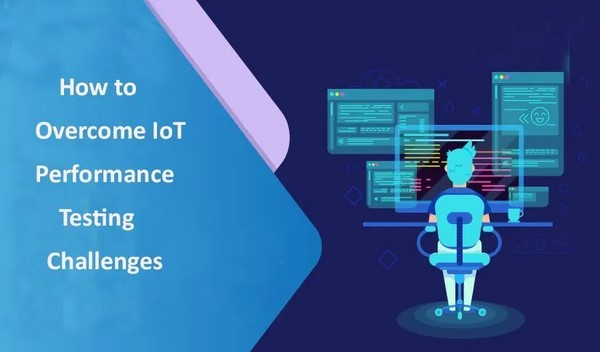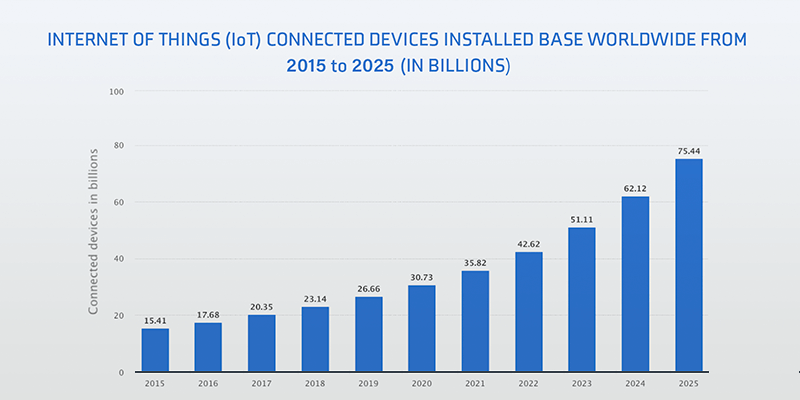The Internet of things is one of the most rapidly advancing technologies in today’s world. It is simply amazing to understand how some technologies that were mere concepts and ideas have grown to such an extent that they are on their verge of explosion.

Theoretical concepts are now full-fledged applications that are changing the society in many ways. Having said this, we can assume that the advancement in technology has rapidly scaled in the past few years.
IoT Scenario In 2020
Internet of things has emerged from basic technology to a full-fledged market in recent years. However, if we take a look back, we can understand that it emerged from the basic requirement of being connected. Humans have the most basic need of staying connected, which is why we have phones, social media platforms, and the most basic Internet. The Internet is the one entity that has helped us stay connected in the world and brought information much closer than it was before. No matter which corner of the world you live in, you can know about the other areas in a fraction of seconds or contact a friend in the least amount of time.
While saying connected with humans forms the social architecture of the society that we live in, this need was extended to other areas of life. Why not stay connected with non- living but necessary entities like your house, appliances, and others! And that’s where the idea of the Internet of things emerged.

IoT has transformed the world in more than a few ways. It is helping technologies integrate with one another and simply the environment for a human. It is streamlining multiple activities so that humans can live freely, while the devices can do the jobs in the best possible way. Imagine your refrigerator ordering milk and dairy supplies automatically when you’re about to run out of it. And this is just one example. Organizations are utilizing IoT for autonomous cars and many other big applications.
Statistics suggest that there would be more than 20.4 billion devices connected in the world by 2020. And this number is only going to rise from here. More and more devices will be added to this connected network. On one hand, it will make the lives of customers much easier, while on the other hand, it will raise challenges for the Selenium Testing Services industry.
IoT Testing Challenges

Customers love IoT because it helps them accomplish several hassled tasks in a much-uncomplicated manner, In other words, it makes their lives much easier. On the other hand, organizations and enterprises have to out in more than a few efforts in designing test cases for these applications.
The problem with testing is that, currently a lot of work is still done by manual testers, they are still writing test scripts and most of their time is occupied in creating code. But, it should have been the other way. Quality analysts must spend their time analyzing the data generated by testing scripts and tools. In spite of technologies like machine learning and artificial intelligence exiting to make this task easier, their adoption is not seen very prominently among organizations.
But if organizations have to move forward, they will have to look for testing solutions that are independent of devices. The responsibility of creating a safe and reliable device not only lies on the shoulders of software developers but also on hardware developers. But when it comes to software, organizations will have to prepare themselves for the plethora of devices that will surprisingly emerge in the market on account of the Internet of Things. According to the latest report by the McKinsey Global Institute, the IoT technologies will affect the economy by $6.2 trillion by the year 2025. With this huge increase in demand, there will also be a huge increase in testing demands that one must prepare for.
How to Approach these Challenges?

One of the smartest approaches to handle these challenges will be to start prioritizing test cases. Since testers cannot test everything from the root it is best to recognize key areas that are assumed to take the longest amount of time. Once the right operating system and the device is identified, organizations can focus most of their testing on these sequences and run smaller intelligence tests on limited common combinations. Organizations will also have t prioritize performance testing. This means making sure that the machine or application can manage any given load and messages are moved according real-time.
Enterprises must pay attention to the choice of the tool they choose for testing the performance of their IoT applications. These tools must have one or more of the key protocols out of Rest API, HTTP, MQTT, and CoAP. In other words, the selection of the performance testing tool must be dependent upon its support for IoT protocol, utilized by IoT applications under test.
It is already known that the IoT device testing is a much complex process starting right from its designing procedure. If IoT applications have t be customized for every device, it will turn into a huge problem and device introduction in IoT will become one of the greatest challenges. Therefore, each device has to be modified to a common abstraction.
Conclusion
Quality analysts must have a powerful Localization testing strategy, good recognition of architecture along with ensuring that the devices and software are always assigned with the latest version. They must learn to embrace the diversity that IoT brings to the table and form a carefully planned testing strategy to integrate on their business.
